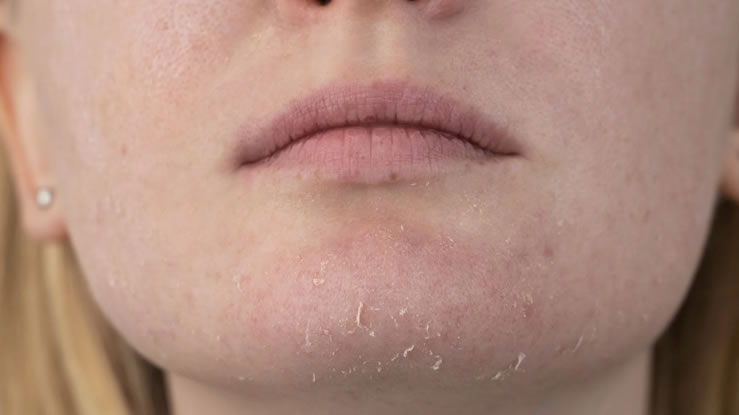Weight loss can feel like a huge victory, especially with the help of medications like Ozempic (semaglutide). However, for many, the journey doesn’t end at the scale. After significant weight loss, one of the most common concerns is loose or sagging skin. This can affect confidence, comfort, and even physical health. In this guide, we’ll explore how to tighten loose skin after Ozempic weight loss from nutrition and lifestyle tweaks to non-invasive treatments and surgical options.
The good news? Loose skin doesn’t have to be permanent. While genetics, age, and the amount of weight lost play a role, there are both natural and medical ways to improve skin elasticity and promote tightening. In this guide, we’ll explore how to tighten loose skin after Ozempic weight loss from nutrition and lifestyle tweaks to non-invasive treatments and surgical options.
You Might like>>>What is the most effective skin tightening treatment?
Why Does Loose Skin Happen After Ozempic Weight Loss?
When you gain weight, your skin stretches to accommodate the extra fat. Over time, this stretching damages the collagen and elastin fibers that keep skin firm and resilient. When weight is lost especially quickly, as can happen with Ozempic your skin may not shrink back right away.
Factors that influence loose skin include:
-
Age: Older skin has less collagen and elasticity.
-
Amount of weight lost: The more significant the loss, the higher the chance of loose skin.
-
Duration of being overweight: The longer the skin is stretched, the harder it is to bounce back.
-
Genetics: Some people naturally have more resilient skin.
-
Rate of weight loss: Rapid weight loss often results in more loose skin than gradual loss.
Nutrition to Support Skin Tightening
Your diet plays a crucial role in helping skin rebuild collagen and elastin.
Collagen-Boosting Foods
-
Bone broth, chicken skin, and fish skin (rich in natural collagen).
-
Citrus fruits and berries (Vitamin C supports collagen synthesis).
-
Leafy greens (loaded with antioxidants).
-
Nuts and seeds (Vitamin E protects against free radical damage).
Protein-Rich Diet
Protein is the building block of healthy skin. Aim for lean meats, legumes, eggs, and dairy to support repair.
Healthy Fats
Omega-3 fatty acids in salmon, walnuts, and flaxseeds keep skin supple.
Hydration
Drink at least 2–3 liters of water daily. Hydrated skin is more elastic and recovers faster.
Strength Training: The Natural Tightener
Loose skin often looks more noticeable because of lost muscle mass along with fat. Building lean muscle can help “fill in” some areas of loose skin.
Best Strength Exercises:
-
Squats and lunges (legs and glutes).
-
Deadlifts and rows (back tightening).
-
Planks and push-ups (core and arms).
Aim for 3–4 sessions per week. Not only does it shape your body, but it also stimulates circulation, which supports skin repair.
Skincare for Firmness
Topical treatments can’t fully eliminate loose skin, but they can improve texture and firmness over time.
Ingredients to Look For:
-
Retinoids (Vitamin A): Boost collagen production.
-
Hyaluronic Acid: Deep hydration for plumpness.
-
Vitamin C serums: Brightens and supports elasticity.
-
Caffeine creams: Temporary tightening effect.
Natural Remedies:
-
Aloe vera gel: Hydrating and soothing.
-
Coconut oil massage: Improves circulation and locks in moisture.
-
Coffee scrubs: Boosts blood flow and skin texture.
Non-Invasive Medical Treatments
If lifestyle changes aren’t enough, modern dermatology offers safe, non-surgical procedures that tighten skin.
-
Radiofrequency Therapy: Stimulates collagen through heat energy.
-
Ultrasound Skin Tightening (Ultherapy): Targets deep layers of skin for firmness.
-
Laser Treatments: Improve collagen and elasticity while evening tone.
-
Microneedling with PRP (Platelet-Rich Plasma): Promotes skin regeneration naturally.
These treatments usually require multiple sessions but offer gradual, noticeable improvements without downtime.
Surgical Options for Severe Loose Skin
For individuals who have lost a significant amount of weight and are left with large folds of skin, surgery may be the most effective option.
Common Surgeries:
-
Tummy tuck (abdominoplasty) – Removes loose skin around the stomach.
-
Arm lift (brachioplasty) – Tightens excess skin on upper arms.
-
Thigh lift – Firms sagging thighs.
-
Body lift – Comprehensive surgery for multiple areas.
While surgery provides the most dramatic results, it also comes with risks, costs, and recovery time. It’s usually recommended only when loose skin is causing discomfort or hygiene issues.
Lifestyle Habits That Help
Sleep
During deep sleep, your body repairs skin cells and produces collagen. Aim for 7–9 hours.
Stress Management
High cortisol levels damage collagen. Yoga, meditation, or even daily walks can lower stress.
Avoid Smoking and Excessive Alcohol
Both accelerate skin aging and break down collagen.
Consistency Over Quick Fixes
It takes time for the skin to rebound after weight loss. Be patient and stick to your habits.
Mindset: Confidence Beyond Skin
While tightening skin is possible, it’s important to remember that loose skin is a sign of your progress and resilience. Many people struggle with body image after weight loss, but reframing how you see yourself can make a huge difference.
-
Celebrate the health milestones you’ve achieved.
-
Dress in flattering styles that make you feel confident.
-
Join communities of others who’ve gone through similar journeys, you’re not alone.
Losing weight with Ozempic is a life-changing accomplishment, but the journey doesn’t end there. Loose skin can feel discouraging, but it’s not permanent and definitely not the end of your glow-up. Through proper nutrition, hydration, strength training, skincare, and medical options, you can tighten and tone your skin gradually.
Most importantly, remember that your body has carried you through transformation and that in itself is beautiful. Whether you choose natural remedies, non-invasive treatments, or surgery, the goal is to feel strong, comfortable, and confident in your own skin.

















